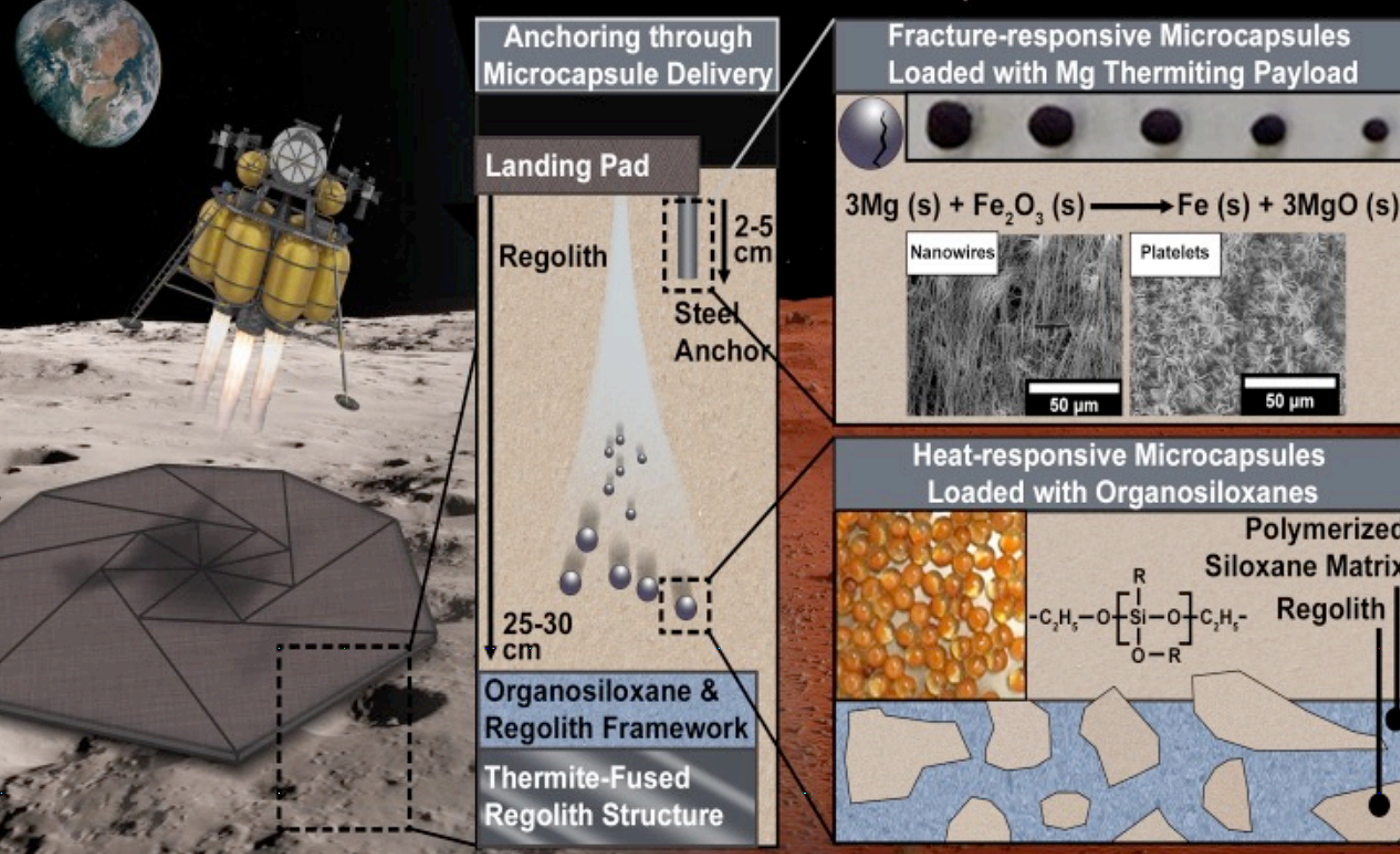Sarbajit Banerjee
Texas A&M Engineering Experiment Station
The “Regolith Adaptive Modification system (RAMs)” was conceived for selective reinforcement and fusing of native Lunar surface materials. The current concept was evolved from a previous NASA NIAC proposal focused on flexible lightweight landing platforms. Much of the current Lunar regolith modification research is focused on using technologies that require significant presence and infrastructure for success, such as sintering and geo-polymerization. In contrast, the RAMs system is uniquely suited for supporting deployment during early landings, but can also be used for more mature construction activities after establishment of Lunar and Martian settlements. Rather than bringing all the material, equipment, and power supplies needed to modify regolith for dust control and other foundation support for foldable landing pads, fixed landing pads or roads, RAMs uses novel microcapsule delivery systems that deliver precursors (nanothermite mixtures and organosilanes) which activate upon deployment to spot-weld anchor points binding the surface structures to the underlying regolith through in situ formation of advanced high-strength steel pegs. This same system delivers additional subsurface regolith stabilization precursors that are impelled deeper within the soil and activated by the initial exothermic reaction resulting in an underlying continuous layer of thermite-fused and geopolymerized regolith constituting a bulwark that provides additional load-bearing capacity. Dust mitigation and bearing capacity are accomplished, therefore, by both reaction/solidification chemistry and a physical mesh barrier.
The novel technologies in the RAMs concept are: 1) a built-in microcapsule-based welding and regolith solidification system consisting of safer nanothermite mixtures and soil stabilizers designed to activate sequentially to form pig iron-based anchors as well as advanced high-strength and ductile steel anchors if needed. These anchors will extend along the rim of the platform and penetrate into the regolith matrix; 2) the use of energy stored within the chemical bonds of regolith components as the primary source to power in situ spot welding and creation of embedded alloy frameworks. This system will anchor assets like flexible pads to a planetary surface by generating in situ the equivalent of seismic grade alloys if needed (in terms of yield strength and elongation performance), e.g., if pig-iron is not strong enough. These alloys enable the platform to withstand the thermal and mechanical stresses incumbent during repeated propulsive landings. Importantly, both the nanothermite and the encapsulating systems are lightweight as well as safe to fly.






























